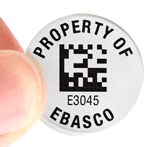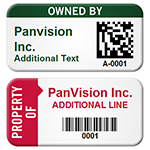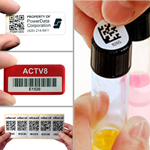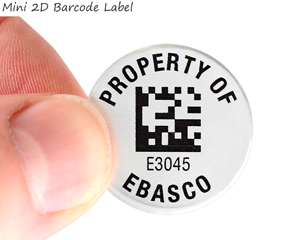Using RFID tags to replant the rainforest
The majestic koa tree is one of Hawaii’s—and the world’s— natural wonders, but a century of logging and agricultural development has decimated that state’s tropical rainforests. One company is trying to bring the koa forests back, and they’re using RFID tags to do so.
Hawaiian Legacy Hardwoods is a hybrid enterprise—a for-profit corporation that has a non-profit public-benefit component written into its incorporation documents. Since 2009, the Honolulu-based company has been planting koa trees cultivated from seed gathered by hand from surviving old-growth trees. Its goal is ambitious: to rebuild the tropical rainforest “and restore the diversity and integrity of the native ecosystem,” according to its website.
So far, they have donated 1,000 acres of land on the Hamakua coast of Hawaii’s Big Island to reforestation. Some 75 percent of the trees they plant there are destined for permanent reforestation, never to be harvested. The other 25 percent are harvested for timber, following sustainable forestry practices.
RFID tags are a major part of the company’s business plan, as each seedling has its own EPC Second Generation Passive RFID-encoded tag that enables Hawaiian Legacy Hardwood foresters to keep track of the tree as it grows.
The RFID tags are “the key to our whole project,” says Chief Information Officer William Gilliam. Each tag is encoded, he explains, with “a hexadecimal serial number that is matched to all of that tree’s data in our database. We store everything about the tree, including which tree its seed came from (we call them Mother Trees), when it was planted, when any watering or fertilization was done, . . . any photos we have collected, pretty much everything we can. All of it is referenced by that serial number.”
It’s an improbable love match between modern technology and Mother Nature. The koa tree, known in formal scientific parlance as Acacia koa, has long been prized for the beauty of its wood. Its color ranges from brilliant orange to gold, red, yellow, brown or ivory, and its distinctively curly grain gives it a three-dimensional appearance. It’s hardly a surprise that koa was the favored wood of Hawaiian royalty.
It was also the material of choice for Hawaii’s famed dugout canoes; mature trees average 50 feet, but many grow to heights of 100 feet or more. Today it is prized by makers of furniture and musical instruments. Because of its scarcity, the price of koa wood has risen 1000 percent in the past 10 years, according to Gilliam.
Replanting the koa is more than an exercise in nostalgia—and more than a commercial proposition. The koa is the habitat of a number of tropical species including the ‘akiapōlā, the Hawaiian woodpecker, which is endangered. More koa trees mean a greater chance of survival for the bird.
The koa is also a nitrogen-fixing plant, meaning that it can survive in nitrogen-poor soils. That ability to adapt is important, because the koa is a pillar of Hawaii’s tropical rain forest, and rain forests play a vital role in countering the overabundance of atmospheric carbon dioxide that causes global warming.
The company has also begun to plant sandalwood trees, another species endemic to Hawaii, and other rare and endangered plants. It’s one of those companies that wants to combine doing well with doing good. Co-founders Jeffrey Dunster, CEO, and Darrell Fox, COO, spent years as partners in a mergers-and-acquisitions consultancy before launching Hawaiian Legacy Hardwoods.
Their business plan includes a for-profit timber operation which grows trees for harvest and offers investment opportunities to groups and individuals; the non-profit legacy reforestation project, which allows individuals to “sponsor” trees in honor of a loved one for; and an onsite legacy tree tour operation that allow visitors to plant their own trees.
RFID tags are key to all facets of the operation. In addition to monitoring the growth and care of each tree, the tags enable faraway investors and sponsors to view their trees via satellite applications like Google Earth, by entering the RFID serial number and accompanying GPS coordinates.
CIO Gilliam explains that “The tag itself is a plastic adhesive label… We encode them on a Zebra printer and then affix them to a regular plastic nursery stake. Then we coat the whole assembly in roofing compound to weatherproof it. We are currently in negotiations with a manufacturer for premade tags that would eliminate this process.” Once the tags are made, he adds, the nursery stake “is stuck into the seedling’s pot and planted with the tree in the field. For the first eight years of the tree’s life, the tagged nursery stake remains.
“We stick them in the ground next to the planted tree,” he said. Then, “in year 8, we’ll retag with a band-type tag that will go around the trunk. Our next steps are to allow the sponsor/owner to access some of this info through our website and eventually add some of their own. For example, say you sponsor a legacy tree for your grandmother. You could upload photos of her and music, videos, etc., to the database under that tree’s ID. We will use this data to add layers of interactivity to the actual forest. By incorporating RFID readers into handhelds and screens in our tour vehicles, we will be able to showcase each tree’s digital content while walking/driving through the forest. Every tree will tell its own story.”
Nor does Hawaiian Legacy Hardwoods intend to stop there, says Gilliam. “We are talking to landowners both here in Hawaii and on the mainland about replicating our system for sustainable reforestation or timber projects. The innovation is the tagging/GPS combo and the system we have developed to manage it all. It gives landowners a way to realistically track what trees they have and what is happening to them.”
Category: Barcodes and RFID















